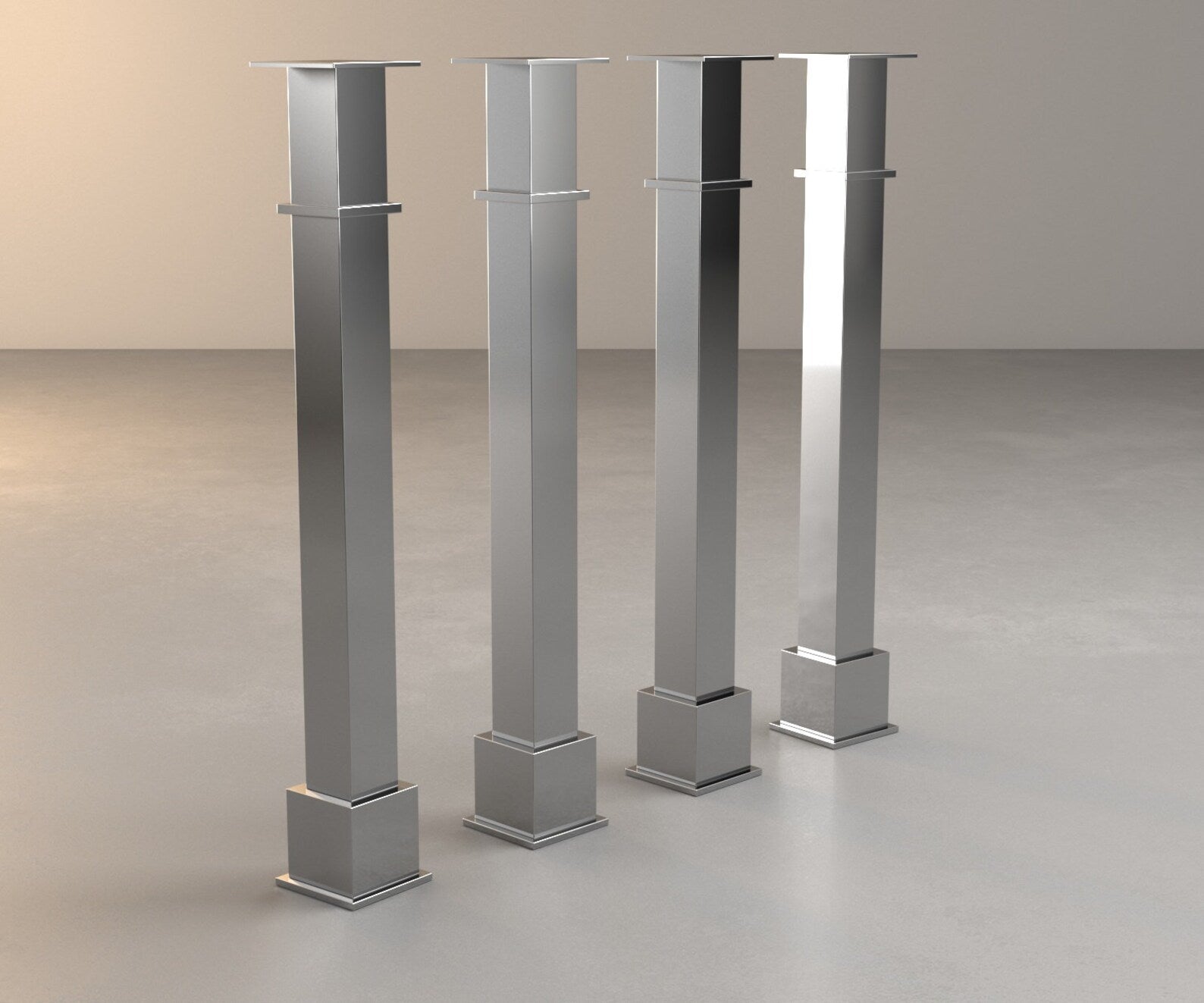Attain a Sophisticated Look Utilizing Ornate Legs For Kitchen Island Designs
Attain a Sophisticated Look Utilizing Ornate Legs For Kitchen Island Designs
Blog Article
Essential Elements to Consider When Selecting Legs For Kitchen Area Island
Choosing the proper legs for a cooking area island entails a careful analysis of numerous factors that can considerably influence both functionality and visual charm. As we discover these aspects, it ends up being clear that each decision can have far-ranging implications for the total kitchen experience.
Product Options
When picking legs for a cooking area island, understanding the different product alternatives is vital for attaining both aesthetic appeal and structural stability (Legs For Kitchen Island). The option of product significantly affects not only the durability of the island yet also its general layout and capability
Metal legs, typically made from stainless steel or wrought iron, contribute a modern and commercial feel while ensuring sturdiness and stability. These materials are resistant to put on and can sustain significant weight, making them suitable for bigger islands.
One more choice is engineered products, like MDF or plywood, which can be extra cost-efficient while still using a variety of surfaces. They may not provide the same degree of security as strong wood or steel. Legs For Kitchen Island. Last but not least, products such as acrylic or glass can produce a contemporary appearance, though they may call for additional support to ensure security.
Inevitably, the selection of product for kitchen area island legs should straighten with the preferred functionality and the general theme of the cooking area.
Design And Style

When thinking about design, the form and surface of the legs are important. Conical legs can supply a feeling of lightness and sophistication, while thicker, a lot more robust legs can communicate strength and stability. Additionally, the finish-- be it repainted, tarnished, or all-natural-- must match the cabinets and counter top materials to create a unified appearance.
In addition, the style of the legs can likewise reflect personal preference. Personalized or ornamental legs, such as those featuring intricate makings or one-of-a-kind geometric forms, can serve as focal points, including personality and character to the kitchen. Inevitably, the ideal option will not just boost functionality but additionally raise the aesthetic allure, making the kitchen area island a standout feature of the home.
Elevation Considerations
Selecting the ideal height for cooking area island legs is essential, as it straight impacts both performance and convenience. The standard height for a cooking area island generally varies from 36 to click over here now 42 inches, straightening with common counter top elevations.

It is also vital to make up individuals' preferences and elevations. Personalizing the elevation can make sure a comfortable experience for all relative, making the cooking area island a much more enjoyable and useful area.
Weight Support
Making sure sufficient weight assistance for kitchen island legs is essential for both security and capability. The kitchen area island often serves numerous functions, consisting of cooking, eating, and additional storage, demanding a robust assistance framework. When choosing legs, it is critical to think about the total weight capacity needed based upon the island's intended use and the products that will be positioned on it.
The selection of material for the legs plays a considerable duty in their weight-bearing capabilities. Solid timber, steel, and heavy-duty composites normally provide exceptional stamina contrasted to lighter products. Additionally, the style i was reading this of the legs-- whether they are right, tapered, or have a pedestal kind-- can influence their capability to disperse weight properly throughout the structure.
Furthermore, the leg positioning need to be strategically planned to improve security. Legs placed at the edges or with a bigger base can much better support heavier loads. Constantly speak with the producer's specs relating to lots restrictions to make certain that the legs can maintain the designated weight without compromising security. In recap, picking cooking area island legs with adequate weight assistance is crucial for creating a practical and secure culinary area.
Installment and Maintenance
Appropriate installment and maintenance of cooking area island legs are important for guaranteeing long life and stability. This usually includes safeguarding the legs to the island base using ideal fasteners, making certain that the legs are level and lined up.
As soon as set up, normal maintenance is needed to preserve the stability and look of the legs - Legs For Kitchen Island. For wooden legs, regular cleansing with a damp fabric and application of ideal wood polish can protect against moisture damage and keep their finish. Metal legs might call for a gentle cleaning option to get rid of grease and gunk, adhered to by a dry cloth to avoid corrosion formation
Furthermore, check the legs regularly for signs of wear or damage, such as cracks or loose joints. Tightening screws or bolts as needed can also extend the life expectancy of the legs. By adhering to these setup and upkeep practices, house owners can make sure that their kitchen island continues to be durable and visually appealing for many years to find.
Conclusion

Visual comprehensibility is paramount in selecting the style and style of legs for a cooking area island, as these components greatly influence the general atmosphere of the area. Conical legs can give a feeling of agility and elegance, while thicker, more robust legs can convey strength and stability.Selecting the proper Your Domain Name height for kitchen area island legs is vital, as it straight influences both capability and convenience. In recap, choosing kitchen area island legs with appropriate weight assistance is necessary for developing a secure and useful culinary space.
In conclusion, selecting legs for a kitchen island necessitates mindful factor to consider of different aspects, including material options, design, elevation, weight support, and installation.
Report this page